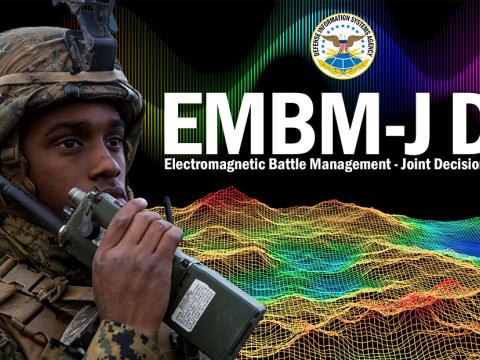Missile Defense Command System On Target
 |
| The U.S. Missile Defense Agency’s (MDA’s) Command and Control, Battle Management and Communications (C2BMC) system allows commanders to coordinate and plan a layered ballistic missile defense. C2BMC permits platforms such as the guided missile cruiser USS Shiloh, shown launching a Standard Missile 3 during a joint MDA-U.S. Navy ballistic missile flight test, to receive and share sensor and targeting data. |
An evolving battle management and situational awareness system is allowing the United States to form a layered missile defense by linking regional, theater and national commands into a single network. A new battle management function allows warfighters to optimize sensor and interceptor operations. By fusing sensor data, the system presents commanders with a common operating picture during a ballistic missile attack. The technology allows users to select and place missile defense assets and to analyze and test for potential weaknesses in defensive coverage.
Developed by the U.S. Missile Defense Agency (MDA), the Command and Control, Battle Management and Communications (C2BMC) system is designed to integrate with existing software and sensor platforms to allow coordinated planning in a layered missile defense. According to Brig. Gen. Robert E. Dehnert Jr., USAF, the MDA’s program manager for C2BMC,
C2BMC’s initial capability consisted of two functions: a force-level planner and a situational awareness tool. The planner compares red force and blue force capabilities and optimizes the red force against the blue, allowing commanders to compare and test their defenses. Its architecture allows the merging of defense applications from lower echelons up to global commands. The situational awareness capability was installed initially at the White House, the
A new global battle management application will be entering service in 2007. It is a real-time tool, which Gen. Dehnert defines as having a delay of one second or less. The general explains that the battle management capability is meant for use by the joint forces air component commander and subordinate personnel. This capability builds on the C2BMC system’s other features: the planner, the situational awareness application and a sensor network. The general notes that these are the four major components for ballistic missile defense.
C2BMC also interacts with orbital platforms such as space-based infrared satellites, which provide initial early-warning data supplemented by ground-based radars. Gen. Dehnert adds that space is very important for seeing and sensing into another nation’s territory.
From its initial capability as a force-level planner and a situational awareness tool, the program is evolving toward the general’s goal of the “anys”—the ability to link any sensor, any shooter, at any phase of missile flight in any region, against any size and type of attack. “We want to be able to accomplish those anys, but we nibble away at them a bite at a time. Design a little, field a little, learn a lot,” he says.
After the system was fielded in 2004, the U.S. Pacific Command (PACOM) was added to the network. This command’s region includes the forward-based X-band radar in
The forward-based X-band radar can provide sensor data to the GMD interceptors in the same manner as Aegis, which adds depth to the sensor network, Gen. Dehnert says. The goal in the coming six months is to pass data from the forward-based X-band radar to an Aegis-equipped warship. The information transfer will allow the ship to cue its sensors and eventually to launch its interceptors with this data.
The program’s next major spiral implementation early this year will allow air operations centers to provide battle management of Aegis ships, forward- based X-band radars and Patriot missile batteries as a threat evolves. The general explains that Aegis can defend
The general adds that the forward-based X-band radar also can defend all three regions, and in early 2008 it will be able to protect
C2BMC became operational in October 2004. In 2005, the forward-based X-band radar was delivered and PACOM was brought online. During the 2005-2006 period, the system was made more robust with dual-screen redundancy and increased reliability and availability, backed by operations and support staff. The general says that it is this entire infrastructure that moves C2BMC from a prototype to a mature, reliable warfighting system. He adds that the entire missile defense system would not be possible if the
PACOM is responsible for any missile launch from
The general says that ideally an Aegis-equipped ship should be able to join the BMDS at zero cost and have improved capability as a result. “That is our fundamental design construct. It doesn’t always work out that way. But an Aegis ship married to a forward-based X-band radar is more capable than an Aegis ship operating independently,” he emphasizes.
Sharing the data and responsibility does not stop with BMDS assets. For example, soldiers performing battle management for the U.S. Army’s Theater High-Altitude Area Defense (THAAD) system operate the system in almost the same way as warfighters at the operational level. “We’re sharing technology to ensure interoperability. Interoperability is a combat capability in and of itself,” the general maintains.
Gen. Dehnert says that his ideal system would consist of five or six missile defense layers, each with an 80 percent chance of engagement success, rather than one or two layers with a 90 percent success rate. He notes that his responsibility is to encourage layered defense not only within BMDS assets but also worldwide. The general chairs NATO’s missile defense committee to ensure that any systems NATO and the
 |
| The C2BMC system allows warfighters such as these crew members of the U.S. Army’s 100th Missile Defense Brigade to manage sensor and weapons system information and to coordinate missile defense operations. |
C2BMC now connects the BMDS across 17 time zones, linking U.S. Forces Korea, U.S. Forces Japan, PACOM, facilities in
The system also connects forward-based X-band radar and Aegis ships capable of tracking and intercepting threats with the Standard Missile 3. Gen. Dehnert shares that there have been several successful intercept tests with missiles fired and directed from Aegis warships. The battle management application also links the GMD interceptors based in
The program soon will incorporate the sea-based X-band radar system, to be positioned near
Gen. Dehnert says that the next big step for C2BMC is to provide soldiers with the ability to manage Aegis ships, forward-based X-band radars and Patriot missiles in 2007 or early 2008. The system will allow the Aegis ships to determine tracking and intercept priorities among themselves in real time, which will be a difficult feat to accomplish, he notes. This year, the U.S. European Command will be equipped with a battle management capability similar to PACOM’s.
Shipboard System Key to Missile Defense The U.S. Navy’s Aegis weapons system forms a key part of the U.S. Defense Department’s ballistic missile defense system (BMDS). Link 16 tactical datalinks are essential to the Aegis system’s functionality within the BMDS because they allow Aegis-equipped ships to accept and share data with a variety of sensors and applications such as the Command and Control, Battle Management and Communications (C2BMC) system. Consisting of a long-range tracking radar and the Standard Missile Three, Aegis already was capable of intercepting incoming missiles before it became a part of the BMDS, says Capt. Joseph Adan, USN, deputy program manager for the Navy’s Command and Control Program Office, part of the service’s Program Executive Office for Command, Control, Communications, Computers and Intelligence Systems, San Diego. The captain believes Aegis’ inherent network centricity allowed it to fit easily into the BMDS architecture. He adds that the U.S. Missile Defense Agency, which is overseeing BMDS efforts, wanted a high level of assurance that target and tracking data could be disseminated across the network. “They had to have redundant paths to ensure that the information would arrive at places that would allow midcourse interceptions, boost-phase interceptions and eventually terminal-phase interceptions to provide a full capability in the long run,” he says. The addition of the joint range extension capability to provide beyond line-of-sight tracking and launch allows Aegis to push missile tracking data to other sensors and weapons. Link 16 also permits the system to share data with other platforms such as the Army’s short-range air defense system and the Multifunctional Information Distribution System (MIDS) low-volume terminal. The Navy’s key contribution to the nation’s layered missile defense is the Global Command and Control System–Maritime (GCCSM). The service also is looking at other means to add early-warning data into the common operational picture. The GCCSM contains mission-planning components for missile defense that link to the C2BMC system. “There have to be interface flows between planning and threat information to Aegis BMD [ballistic missile defense] to ensure that missions and asset allocations for planning are correct,” he says. The Link 16 system operates on the Navy’s guided missile destroyer DDG-51 and missile cruiser CG-47 platforms. The next-generation command and control program serves as the data translation forwarding system on these vessels. The captain shares that a processor was added to the system to operate the joint range extension application protocol, allowing a beyond line-of-sight tracking capability. Capt. Adan notes that most Aegis-equipped vessels have Joint Tactical Distribution System (JTDS) radios with embedded Link 16 capabilities. But in future spiral evolutions, the radios will be the shipboard MIDS, which also features Link 16. Aegis has had a Link 16 capability for many years, certainly since the introduction of the JTDS, he states. Capt. Adan believes that the Link 16 datalink capability is one of the keys to Aegis’ success in intercepting missiles. The links complement the system’s long-range radar and SM-3 weapons. Aegis radar is sensitive enough to track the separation of a warhead from a missile body and to track the warhead. “The reason for the [data]links is to provide that network capability to get the information around quickly,” he notes. Capt. Adan shares that many efforts are underway to enhance the information handoff for ballistic missile defense among the different players. Commands such as the U.S. Strategic Command are pushing for more network-centric capabilities to publish and share information to allow leaders to make decisions. The captain believes that the major challenges facing Aegis in a missile defense role are doctrinal, not technical. “We have to have tools that allow our ship COs [commanding officers] to multitask and understand what the risks are so they can articulate those risks to higher authorities as well,” he says. |
Web Resources
U.S. Space and Naval Warfare Systems Command: www.spawar.navy.mil




Comments